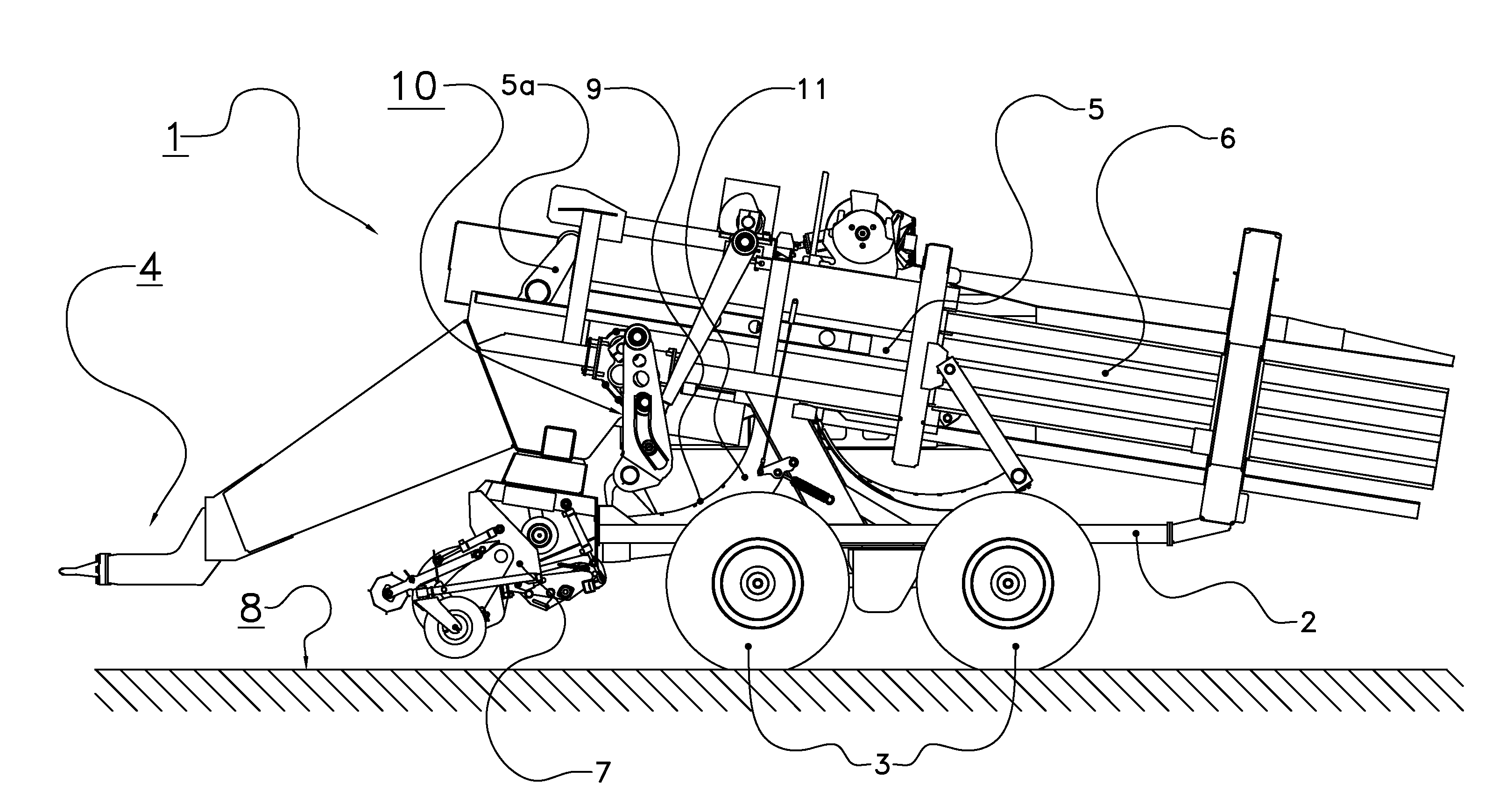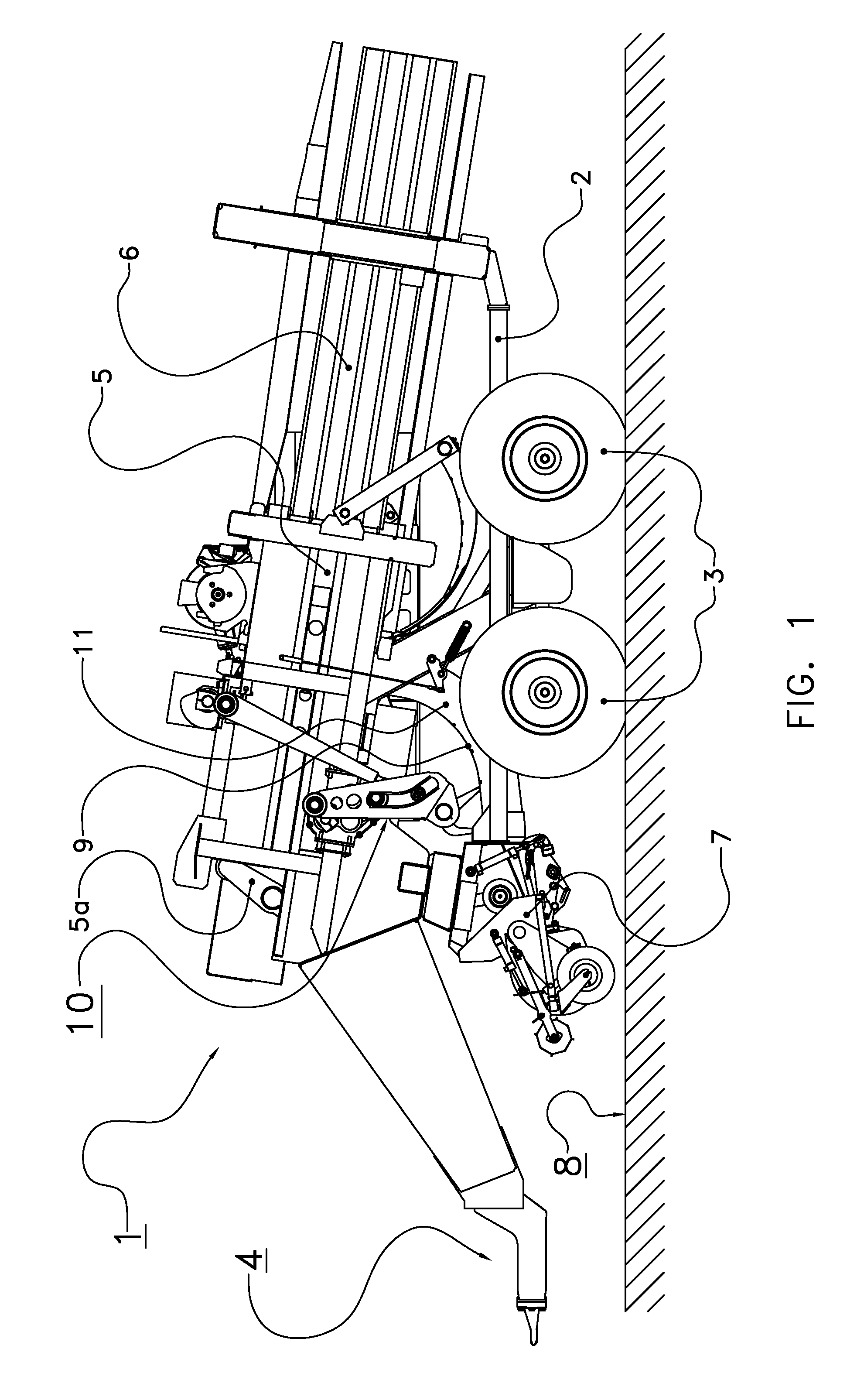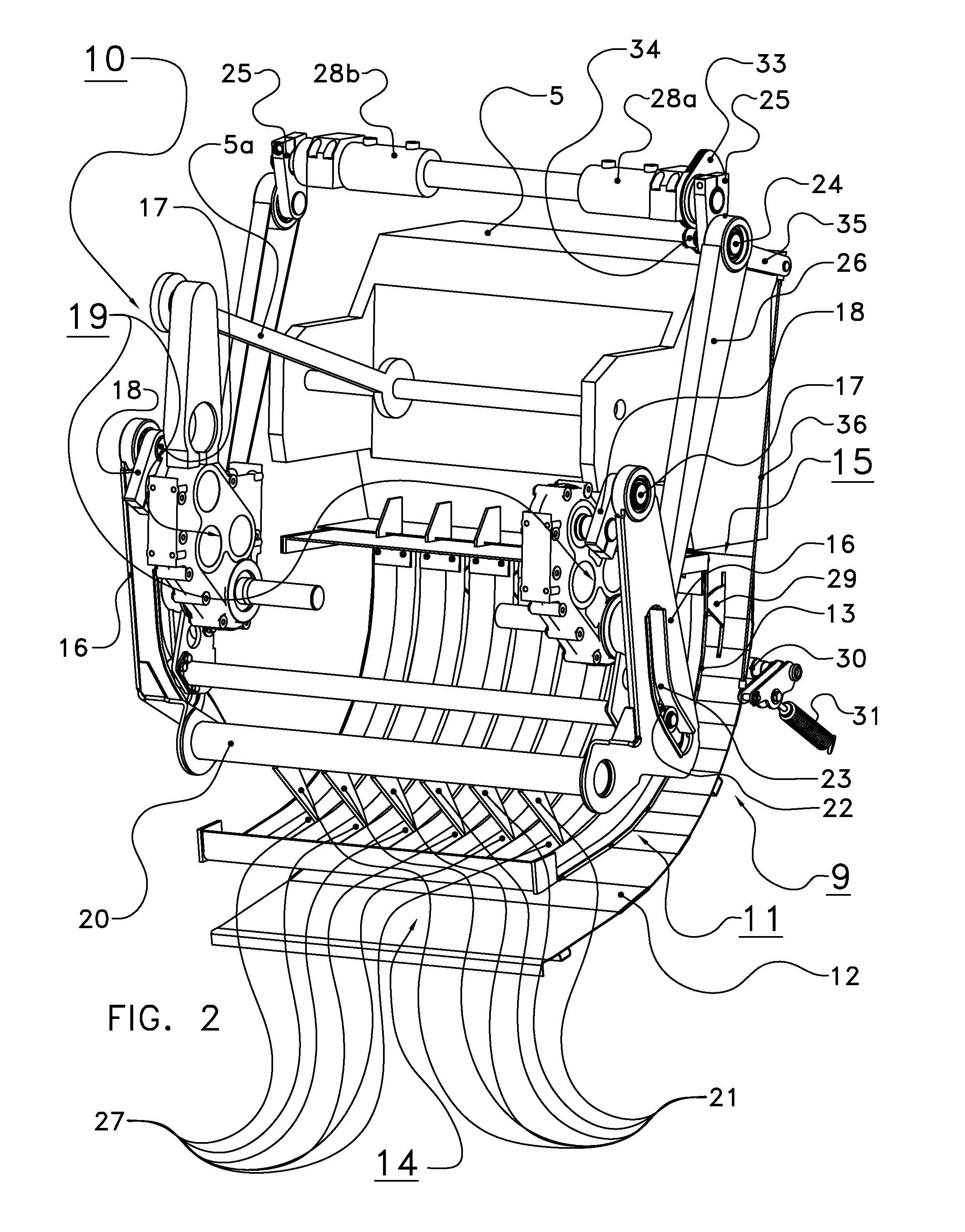Stuffing device
a technology of stacking device and stout, which is applied in the direction of baling, agriculture tools and machines, agriculture, etc., can solve the problems of relative complex construction of the mechanical linkage system and low flexibility of the arm movement trajectory
- Summary
- Abstract
- Description
- Claims
- Application Information
AI Technical Summary
Benefits of technology
Problems solved by technology
Method used
Image
Examples
Embodiment Construction
[0032]The following is a description of certain embodiments of the invention, given by way of example only and with reference to the drawings. FIG. 1 shows a side view of a piston bale press, generally denoted with the reference numeral 1. Piston bale presses of this type are generally known and for instance disclosed in EP 1 769 674, EP 0870 425, and U.S. Pat. No. 4,106,268, which are all hereby incorporated by reference in their entireties.
[0033]The piston bale press comprises a frame 2 supported by wheels 3. The piston bale press 1 is configured to be connected at its front end 4 to a pulling vehicle, for instance a tractor. The piston bale press 1 further comprises a piston press 5 configured to press crop material in rectangular bales in a bale chamber 6. A main drive mechanism 5a is provided to move the piston press 5 in an oscillating movement in the bale chamber 6 to compress crop material in the bale chamber 6. The piston bale press 1 further comprises an intake device 7 to...
PUM
 Login to View More
Login to View More Abstract
Description
Claims
Application Information
 Login to View More
Login to View More - R&D
- Intellectual Property
- Life Sciences
- Materials
- Tech Scout
- Unparalleled Data Quality
- Higher Quality Content
- 60% Fewer Hallucinations
Browse by: Latest US Patents, China's latest patents, Technical Efficacy Thesaurus, Application Domain, Technology Topic, Popular Technical Reports.
© 2025 PatSnap. All rights reserved.Legal|Privacy policy|Modern Slavery Act Transparency Statement|Sitemap|About US| Contact US: help@patsnap.com



